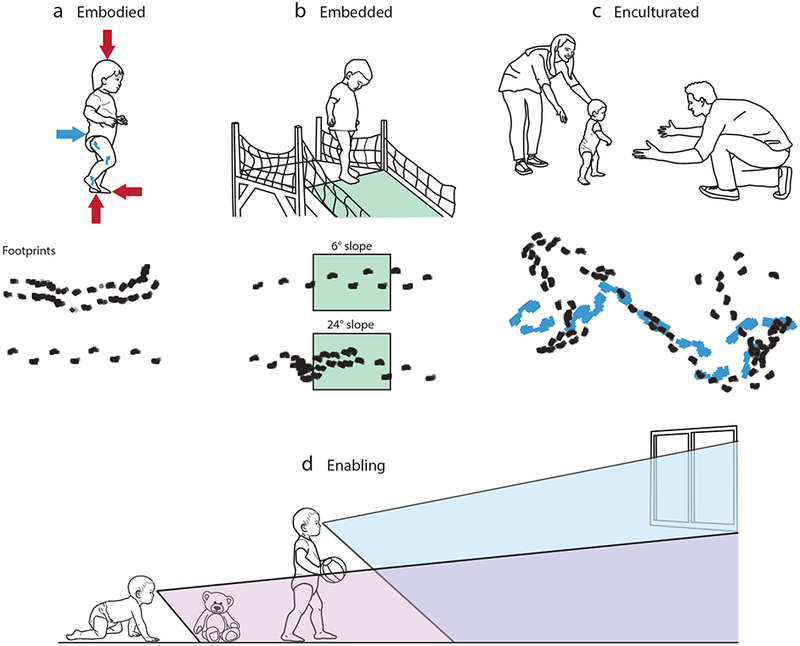Figure 1.

Motor development is embodied, embedded, enculturated, and enabling. (a) Embodied movement. Infant walker with red arrows denoting forces acting on the body (gravity, friction forces, ground reaction force) and blue arrows representing forces generated by the body (propulsive force and torques). Footprints show characteristic gait patterns of (top) a novice infant walker with short, irregularly spaced steps and the feet wide apart and (bottom) an experienced infant walker with longer, narrower, more regularly spaced steps (data taken from Lee et al. 2018). (b) Embedded movement. An infant is shown deciding whether and how to descend a steep slope. Footprints show characteristic gait modifications in an experienced infant walker while approaching and descending a shallow 6° slope and a steep 24° slope (data taken from Gill et al. 2009). Green boxes denote the middle sloping section of the walkway. (c) Enculturated movement. An infant is shown taking first steps from the arms of one caregiver into the open arms of another. The illustration is based on Van Gogh’s 1890 painting, “First Steps.” Footprints show the characteristic walking patterns of an infant (black) and caregiver (blue) during free play (data taken from O. Ossmy, J. Hoch, S. Hasan, W.G. Cole, and K. Adolph, unpublished data). (d) Movement enables new developments. The schematic drawing shows the average field of view for crawling and walking infants (data taken from Kretch et al. 2014).
